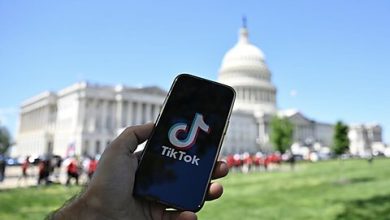Student Loan Forgiveness and Standing

Last Thursday, the Supreme Court struck down President Biden’s student loan forgiveness program, finding that it was not plausibly authorized by statute and that the State of Missouri had standing to challenge the program via a state‐created loan‐servicing entity that would lose tens of millions of dollars in fees if the program took effect. This post will explain why Cato filed its own, now‐moot challenge to the loan forgiveness program, followed by some thoughts on the increasingly pernicious role of “avoidance doctrines” such as standing, ripeness, and mootness in public‐policy litigation.
The great miltitary strategist Sun Tzu famously said that the acme of skill in war is to subdue the enemy without fighting. For government lawyers, the acme of skill is to shield unlawful policies from judicial review by persuading courts that there is some procedural bar against challenging them. Last week, the Supreme Court rebuffed the Biden administration’s attempt to employ that precise stratagem to forestall a judicial determination as to whether the president has the power to forgive nearly half‐a‐trillion dollars worth of student loans without express congressional authorization. Surprising no one, the Court’s answer to the substantive question was a resounding “no.” But constructing a legal challenge that would ensure the judiciary reached the merits of that question was a dicey proposition. Why? One word: Standing.
In brief, standing is a court‐created rule that says only certain people can challenge a given policy in court. To have standing, the would‐be plaintiff must have suffered a concrete injury that was caused by the policy at issue and can be fixed (or “redressed”) by the courts. Thus, for example, I do not have standing to challenge the Justice Department’s sweetheart plea deal with Hunter Biden, both because I’ve not been personally injured by it (mere outrage is insufficient) and because there’s really nothing the courts can do about DOJ’s propensity for coddling VIPs.
Like so many judge‐made legal rules, however, standing is both amorphous and prone to abuse. It’s amorphous because it lacks clear doctrinal parameters and can be easily enlarged or constricted as a matter of judicial whim. And of course that makes it prone to abuse, since judges can simply declare that a given plaintiff either does or does not have standing depending on whether they do or don’t want to reach the merits of the case at hand. To be clear, not all standing inquiries represent such an exercise in procedural roulette, but an increasing number of them do—particularly as poliymakers become more conscious of their ability to defeat judicial review through strategic legerdemain.
Thus, the key question in the loan‐forgiveness case was not so much the legality of the program itself, but instead whether the Biden administration and its lawyers could persuade the judiciary that the executive branch can expend nearly half‐a‐trillion dollars in unappropriated funds without causing a sufficiently concrete injury to confer standing on any individual or entity affected by that program. As we learned last Thursday, the answer is no. But boy, was it close.
Without delving too much deeper into federal standing doctrine, the basic problem here was that the Supreme Court has generally rejected the concept of “taxpayer standing”—that is, the idea that any given person who pays taxes can sue the government simply because it is (arguably) spending that revenue unlawfully. Accordingly, when President Biden announced his intent to forgive student loans without express congressional authorization, there was a scramble among people and groups who opposed that policy to identify a concrete and individualized theory of standing that might pass muster with a judiciary that tends to be more comfortable rubber‐stamping challenged government programs than striking them down—especially when they involve things like the proper scope of federal power, economic regulations, property rights, or tax policy.
As noted, Missouri and a handful of other states led with the theory that a blanket student loan forgiveness policy would deprive them of fees generated by their respective loan‐servicing entities. Another suit was filed by two college graduates from Texas who challenged the Department of Education’s failure to follow proper administrative procedures, which they said might have resulted in better debt‐forgiveness terms for each of them.
At the time, it was unclear whether either of those standing arguments would prove viable, and additional complaints were filed by other groups, each asserting a different theory of standing. This included a lawsuit brought on Cato’s behalf by the New Civil Liberties Alliance, which alleged that Biden’s blanket loan forgiveness program would prejudice non‐profit employers like Cato, for whom Congress had created a more targeted policy called the Public Service Loan Forgiveness Program that was designed to give non‐profits a recruiting edge by providing loan‐forgiveness to their employees after ten years. Whether legitimate or illegitimate from a policy perspective, the advantage conferred on charitable employers by that program would be eliminated by across‐the‐board debt forgiveness, which represents a cognizable injury that is redressable by the courts—et voila: standing.
As it turns out, the Supreme Court held unanimously that the two Texans lacked standing to challenge Biden’s loan forgivness program while ruling 6–3 that the states (or at least one of them, which is all that mattered) did have standing. Bottom line, it was a close call, and it was fortunate that Cato and others were waiting in the wings with their own unique—and potentially more persuasive—standing theories. But those other cases, including Cato’s, are now moot in light of the Court’s decision to find standing in the states’ challenge and strike down Biden’s loan forgiveness scheme.
In retrospect, the half‐dozen lawsuits filed against that program may seem like overkill. But as a colleague at my first law firm used to say of a judge in one of his cases, “You never know on any given day what’s going to get his attention: Will it be the red rubber ball, the shiny metal object, or the baby rattle? So you bring ‘em all.” And so it is when seeking to overcome the slew of avoidance doctrines routinely deployed in public‐policy litigation by government lawyers like ink from a fleeing squid. If standing, ripeness, and mootness can fairly be compared to a game of craps—and they can—then it makes sense for both sides to get as many chips on the table as possible.
If that sounds like hyperbole, consider the following examples, which represent merely the barest hint of the jaw‐dropping bad faith with which avoidance doctrines are asserted by government lawyers and employed by judges to make potentially troublesome cases go away:
Cato v. SEC (DC Cir. 2022). This case involved a First Amendment challenge to the SEC’s policy of imposing a lifetime gag order on defendants in civil enforcement actions as a condition of settlement. Cato sued on behalf of an author who wrote a memoir about being caught up in that process that it was unlawful for him to publish due to the gag order. As a would‐be publisher of that work, Cato asserted the well‐established theory of third‐party standing, but the DC Circuit held that the “redressability” requirement for standing was not met on the premise that all of the challenged gag orders had been incorporated into judicially enforceable consent decress around the country that judges in DC were powerless to disturb. Besides being incorrect on the law, that holding was based on a demonstrably false factual premise: Contrary to the DC Circuit’s completely baseless assertion—that was supported nowhere in the pleadings or the record because it was false—all gag orders (including the very one at issue in this case) had not been incorporated into judicially enforceable consent decrees—a fact that Cato pointed out repeatedly throughout the litigation and again in its petition for rehearing, which the DC Circuit ignored.
Parker v. Heller (DC Cir. 2007). Another example of standing gamesmanship from the DC Circuit arose in the Second Amendment challenge to the District of Columbia’s gun laws brought on behalf of six DC residents by me, former Cato board chair Bob Levy, and Alan Gura. In blatant and acknowledged disregard for Supreme Court precedent, the DC Circuit invoked its special law of standing for guns and held that five of the six plaintiffs lacked standing because they had not yet violated the law and received a specific threat of prosecution—actions that are never required in any other setting to establish standing. Only Dick Heller was ultimately found to have standing because he had made an entirely futile attempt to register a handgun in DC and was denied—an act that the DC Circuit risibly (but correctly, as a matter of circuit precedent) held supplied an alternative basis for standing.
Alvarez v. Smith (2009) and NY State Rifle & Pistol Ass’n v. City of New York (2020). These are both examples of “strategic case mooting,” a common practice whereby government lawyers will vigorously defend an unconstitutional policy in the lower courts and then moot the case if it looks like the challengers might win on appeal and thereby establish favorable precedent. Alvarez was a challenge to Illinois’ unconstitutional civil forfeiture procedure, which the state defended below but then mooted when the case got to the Supreme Court by returning the plaintiffs’ unlawfully seized vehicles. NY State Rifle & Pistol involved a challenge to a New York City ordinance that severly constrained people’s ability to move a lawfully registered pistol from one location to another (e.g., from an apartment in Manhattan to a cabin in upstate New York), which the City defended vigorously in the lower courts but then repealed immediately after the Supreme Court granted certiorari, in a transparent (and ultimately successful) effort to derail the case. So much for all the assertions the government made in the lower courts about the supposed importance of the law, the momentous safety issues involved, etc.—all of which turned out to be cynical, disingenuous prattling.
As suggested above, the list could go on almost indefinitely. But the takeaway is this: When it comes to the willingness of government lawyers and judges (a wildly disprportionate number of whom were themselves courtroom advocates for government before taking the bench) to employ standing, ripeness, mootness, and other “avoidance doctrines” in order to derail challenges to plausible allegations of unlawful governemnt action, there is no bottom.
And that’s why Cato joined the fray over President Biden’s unlawful student loan forgiveness scheme—not because there was every any doubt about the merits; but instead to help make it as difficult as possible for the judiciary to sweep that unlawful power grab under the rug with the handy‐dandy standing‐broom.





